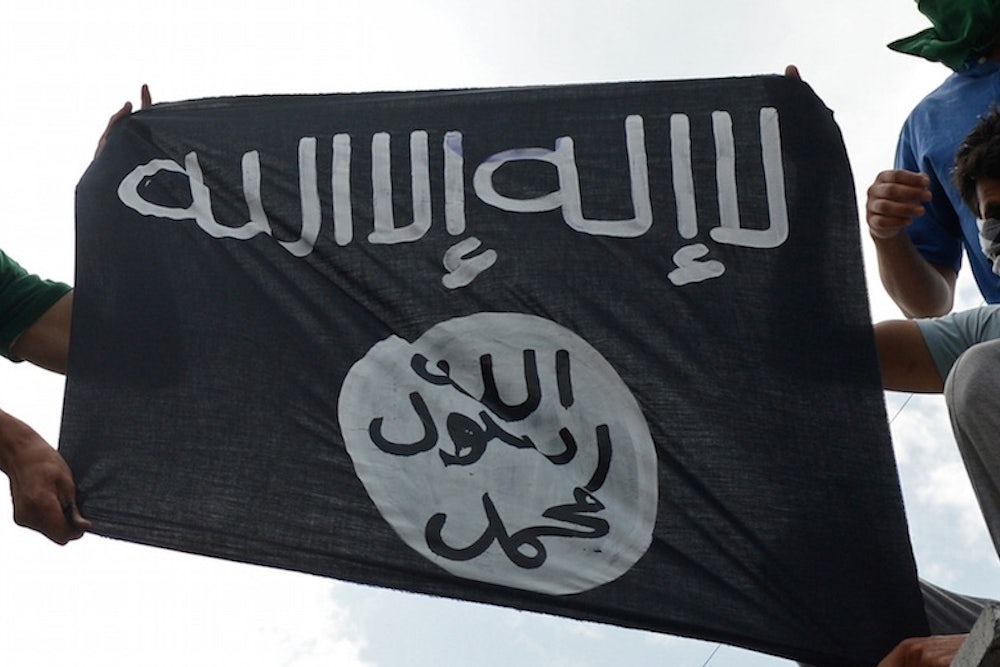You probably won't find "Dawlat al-Islam Qamat" on the many lists of the year's best music. But the song has defined the year quite literally in life and death, and marked the emergence of a quasi-state that got the world's attention. "My Ummah, Dawn Has Appeared," to give it its English name, is perhaps the most beguiling, hypnotic, disturbing piece of music you might have heard all year. And you probably have heard it—or at least snippets of it, before a news report cuts away or you can no longer stomach what you're watching.
Released at the end of 2013, "My Ummah, Dawn Has Appeared" sounds almost timeless. It opens with soaring Arabic chants unaccompanied by musical instruments, either hypnotizing the listener or lulling him to sleep. It's only as you approach the three-minute mark that you realize this is no ordinary piece of music, and you'll be shaken from your soporific state. There's the sound of a sword being drawn, boots marching, and a burst of staccato gunfire. (If you speak Arabic, these sounds would have been less surprising, as the lyrics begin, "My Ummah, Dawn has appeared, so await the expected victory. The Islamic State has arisen by the blood of the righteous.")
"My Ummah, Dawn Has Appeared" is the product of the Ajnad Media Foundation—the Islamic State's record label, of sorts. Author Alex Marshall calls the song the "national anthem" of IS, while Aymenn Jawad Al-Tamimi of the Middle East Forum—who was at the center of a controversy over his methods of cultivating IS sources—says the song "has helped give IS its distinct identity, quite apart from other jihadi groups, with emphasis on themes such as the establishment of the Caliphate here and now."
Jihadi songs, or nasheeds, are nothing new, with examples coming out of Islamist movements in Egypt and Syria in the late 1970s and early 1980s. They are a cappella Islamic vocal music with a jihadist message, and conform to strict interpretations of the use of music in Islam. (Jihadist Muslim scholars debate what is haram, or sinful, in music, though instruments and percussion are usually forbidden.) Aside from their long history in Islamic culture, you'll find them in videos eulogizing famous jihadists of the Chechen wars, training videos from Kashmiri separatists, or in productions from Al Qaeda's media wing, As-Sahab.
"My Ummah, Dawn Has Appeared" is one of a number of IS nasheeds, but its importance is demonstrated not only in its use by the IS itself, where it has been played by the group at events in its de facto capital of Raqqa, but also in its reach beyond the boundaries of the "caliphate." Nigerian militant group Boko Haram, which increasingly models itself on IS, even chose the song to accompany a speech by leader Abubakar Shekau that was released in October.
While most media attention focuses on the production quality of Islamic State videos, they're nearly all interwoven with music, giving fighters an almost messianic quality. The nasheed is meant to have universal appeal: To impressionable ears, even those which don't understand Arabic, the nasheed appears to give a religious authenticity to even the most brutal videos. It's a frightening reminder that IS believes even its most heinous acts are supported by a higher power.
